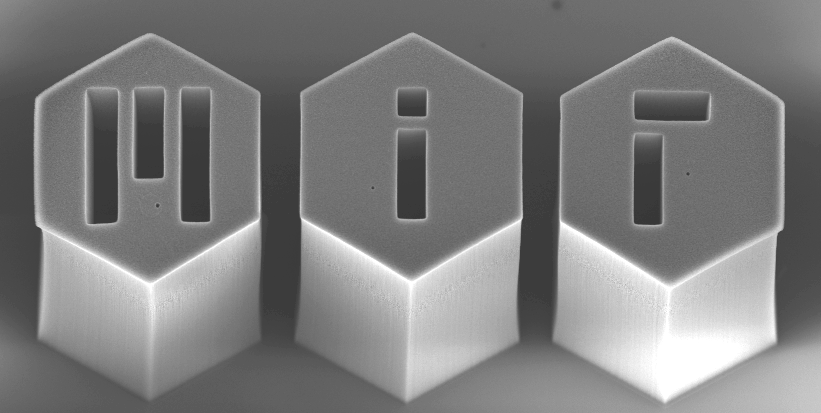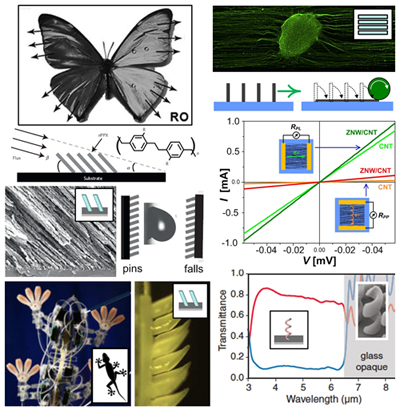S. Tawfick, M. De Volder, D. Copic, S. Park, E.S. Polsen, C.R. Oliver, M.J. Roberts, A.J. Hart. Engineering of micro- and nanostructured surfaces with anisotropic geometries and properties. Advanced Materials. [http://dx.doi.org/10.1002/adma.201103796]
Widespread approaches to fabricate surfaces with robust micro- and nanostructured topographies have been stimulated by opportunities to enhance interface performance by combining physical and chemical effects. In particular, arrays of asymmetric surface features, such as arrays of grooves, inclined pillars, and helical protrusions, have been shown to impart unique anisotropy in properties including wetting, adhesion, thermal and/or electrical conductivity, optical activity, and capability to direct cell growth. These properties are of wide interest for applications including energy conversion, microelectronics, chemical and biological sensing, and bioengineering. However, fabrication of asymmetric surface features often pushes the limits of traditional etching and deposition techniques, making it challenging to produce the desired surfaces in a scalable and cost-effective manner. We review and classify approaches to fabricate arrays of asymmetric 2D and 3D surface features, in polymers, metals, and ceramics. Analytical and empirical relationships among geometries, materials, and surface properties are discussed, especially in the context of the applications mentioned above. Further, opportunities for new fabrication methods that combine lithography with principles of self-assembly are identi?ed, aiming to establish design principles for fabrication of arbitrary 3D surface textures over large areas.
Disclaimer: The PDF documents on this webpage are provided for educational and personal purposes alone and are subject to copyrights of the respective publishers.

